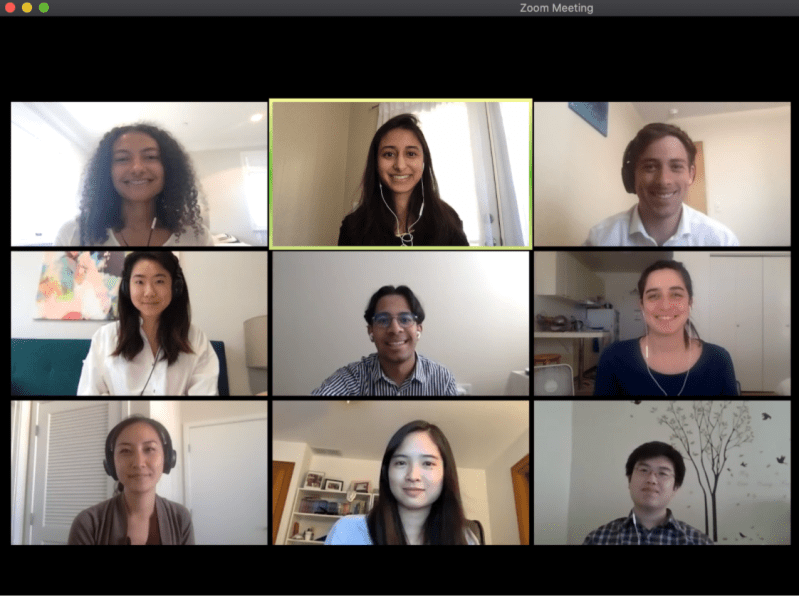After closing down in March due to COVID-19, Stanford’s Cardinal Free Clinics (CFC) will reopen virtually using a telehealth model, employing new techniques for communicating with patients remotely.
This new campaign was officially launched on the first weekend of July after months of planning, development and training for the volunteers.
The clinics were initially shut down both to “ensure the safety of patients, students, providers and the community,” said medicine clinical professor Baldeep Singh B.S. ’86. Singh, who serves as a medical director of the clinics, added that they also depended on both medical and undergraduate student volunteers, many of whom “had to move off campus primarily back home to other states.”
Bianca Mulaney, M.D. ’23 and head of operations for the Arbor Free Clinic in Menlo Park, said they immediately began brainstorming ways to provide services to patients despite the challenges of the pandemic.
“We felt frustrated that we had to close at a time when vulnerable communities would be most in need of health support,” she said. Many federally funded community health centers and other low-cost clinics struggled to stay open. These clinics are the “backbone of primary care in America,” Mulaney said, so it was essential to find a way to serve these communities.
Singh also stated that the “most urgent need was to ensure that members of the community would have access to insurance for refills of medications for chronic conditions” and for patients to be able to “obtain follow-up care for chronic conditions.”
Their telehealth plan also took extra measures to create because they were forced to merge the two independently running branches: the Arbor Free Clinic (AFC) and the Pacific Free Clinic (PFC) in San Jose.
It took a lot of “integrating between the two clinics” because they had always worked separately with “different methods.” To make them more connected, the managers of both clinics worked together to “create detailed volunteer guidelines to make the system more cohesive,” said volunteer and Patient Health Navigator (PHN) Francesca Kim.
Many hours were put in by those involved in the planning and preparing for the launch of the telehealth clinic through Zoom meetings and virtual training sessions.
Gabriela Ruiz Colón, the Operations Manager of the PFC, said that during the spring quarter they “worked to develop a telehealth workflow that mirrored [their] standard in-person clinic offerings,” which included interpreting services, referral services and lab services.
Along with the training, merging and planning, they faced other legal and logistical issues when setting up this new model.
“It took a while to create and complete a new workflow to operationalize telehealth,” Singh said, “taking into account processes for social needs screening, ensuring patient privacy, addressing the digital divide and training volunteers on telehealth etiquettes.”
Now, with the telehealth clinics having been opened for a week and a half, the biggest struggles so far have been technical difficulties and barriers. Kim said that there are some issues they are addressing as they go on.
“IT issues can arise and wifi issues, too,” she said. “Since we can’t have it in person, it is challenging to make it the same as before, but we are trying to make it a very welcoming experience for our patients. We are trying to foster a supportive experience for the patients despite the difficulties doing it virtually.”
As for COVID-19, they have made the decision not to directly treat patients who show symptoms for the virus due to the lack of training the volunteers have on the subject. If a patient complains of such symptoms, using the Stanford Hospital and County resources, they inform them on basic COVID-19 protocole and restrictions.
Also, due to the new structure and plan, the majority of their current patients are people they have worked with in the past. Though “[they] do not like to turn away patients, restrictions are needed,” and for now, they have made the decision to only take patients from California, Kim added.
“Of course, our model will continue to evolve as we get feedback from volunteers, patients, and our medical directors,” Colon said. “But we feel like we have a robust-enough workflow such that we can serve our patients’ needs.”
Mulaney believes that some good may have even come out of this abrupt shift and new model.
“We are also starting to think about what the CFCs will look like post-COVID. A few initial anecdotes suggest that telehealth could even be a better experience for patients than our in-person clinic,” Mulaney said. “Telehealth could also allow us to expand our capacity to see patients. So, telehealth may be here to stay in some capacity.”
Contact Zenobia Lloyd at zenobiarose97 ‘at’ gmail.com
